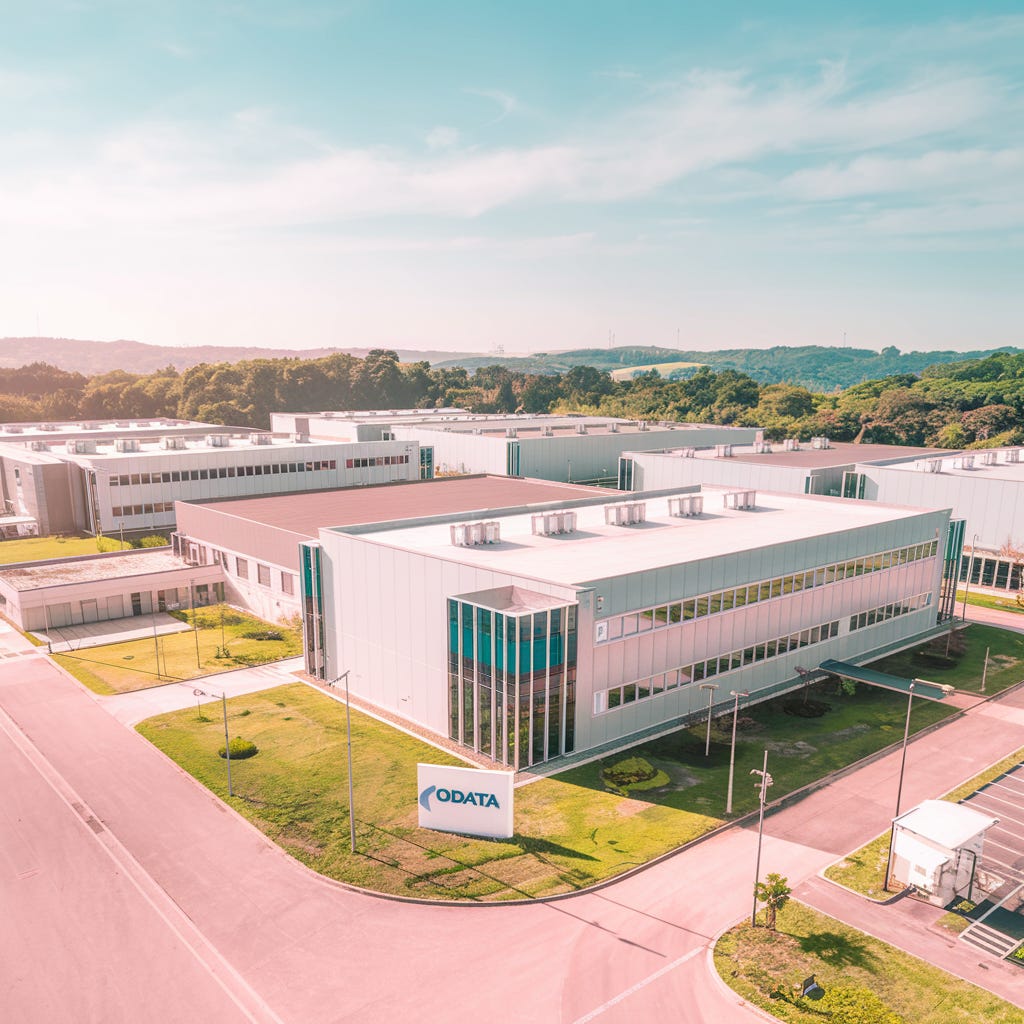What if Latin America leapfrogged the West in AI infrastructure?
Not through hype. Not through headlines. But through execution.
That’s exactly what ODATA is doing with its $450 million hyperscale investment in São Paulo.
Launching in April 2025, DC SP04 is not just Brazil’s newest data center—it’s a statement of intent.
It’s saying to global hyperscalers, cloud providers, and AI builders:
You don’t have to compromise when you expand into Latin America.
You can scale AI-ready infrastructure without giving up performance, sustainability, or resilience.
The Context: A New Global Order for Infrastructure
For years, Latin America has been treated as a “next” market, one that would eventually catch up to the digital infrastructure standards of the U.S., Europe, and parts of Asia.
But the AI era has scrambled the timeline.
Suddenly, demand is outpacing supply, globally.
Workloads are heavier. Compute is denser.
And infrastructure, not capital or talent, is becoming the primary bottleneck.
That’s why ODATA’s new project matters so much.
It’s not a delayed response to market needs.
It’s a preemptive strike, a bet that the next wave of growth won’t be constrained by geography, but by infrastructure readiness.
And in São Paulo, readiness is arriving early.
What Makes DC SP04 Different
ODATA’s 48MW facility in Osasco, São Paulo isn’t just big, it’s built different.
It’s designed from the ground up to:
Support 50kW per rack power densities
Integrate seamlessly with liquid cooling and HPC environments
Operate on 100% renewable energy from day one
Scale modularly to meet hyperscale and enterprise-grade demand
At 25,000 square meters, it’s massive, but its design makes it nimble.
The facility isn’t chasing demand, it’s shaping it.
This is what it means to be future-native:
Building for the next decade of AI and cloud evolution, not the last one.
Delta³: Cooling as Competitive Advantage
Let’s talk about the secret weapon: Delta³ cooling.
Developed by Aligned Data Centers and deployed exclusively by ODATA in South America, Delta³ is an entirely different approach to cooling.
Most facilities push cold air into the room and hope it reaches the racks.
Delta³ flips the model, it captures and removes heat directly at its source.
This creates three strategic advantages:
Dramatically improved energy efficiency (critical in high-density environments)
Space savings that allow for higher rack densities without overheating
Seamless liquid cooling integration, enabling future workloads like AI training and inferencing at scale
As Kelvin Tamura, ODATA’s Design Director, explains:
“Delta³ enables us to cool hyperscale IT environments efficiently, saving both energy and space.”
Translation?
It’s built for AI. And it’s built to scale.
Sustainability: Not Just Optics, It’s Strategy
AI is resource-intensive.
By 2030, data centers are expected to consume more than 8% of global electricity.
That’s why ODATA’s sustainability posture isn’t just branding, it’s a strategic lever.
DC SP04 will run on 100% renewable energy, right from day one.
And with Delta³ optimizing energy use, this facility cuts carbon while reducing OPEX, a win for investors, clients, and the planet.
In the words of CEO Ricardo Alário:
“We take great pride in operating with 100% renewable energy in Brazil, reinforcing our commitment to sustainable and responsible energy practices.”
In an industry where cooling often accounts for 30–40% of energy consumption, systems like Delta³ can unlock massive efficiency gains, and financial alpha.
The future of digital infrastructure is green by design, not retrofit.
ODATA’s already there.
The Osasco Advantage: Strategic Regional Gravity
Why Osasco?
It’s part of the greater São Paulo metro, Brazil’s largest economic center, but historically underserved by hyperscale-ready infrastructure.
By building in Osasco, ODATA achieves three things:
Fills a critical capacity gap in one of LATAM’s most tech-intensive corridors
Offers proximity to demand clusters for cloud, SaaS, and telecom operators
Creates economic gravity, driving talent and capital into the region
This isn’t just about data halls, it’s about ecosystem building.
When infrastructure lands, everything follows:
AI labs
Software startups
Cloud expansion
Connectivity upgrades
Public-private partnerships
And most importantly: jobs.
São Paulo isn’t just a digital city anymore.
It’s becoming a foundational node in the AI-era infrastructure map.
The Bigger Picture: A Global Playbook in Motion
ODATA’s parent company, Aligned Data Centers, acquired the firm in May 2023.
SP04 is the first South American deployment of Aligned’s high-performance, sustainability-forward infrastructure strategy.
Delta³ and its complementary system, DeltaFlow~, are already live in high-growth U.S. markets.
Now they’re being localized, and optimized, for LATAM conditions.
What does that mean?
It means hyperscalers, enterprises, and governments don’t have to wait for global standards to arrive.
They can access next-gen performance, locally.
This is the model the global South needs:
Local infrastructure
Global capabilities
Built-in sustainability
AI-native design
São Paulo is the first.
Santiago, Bogotá, and Mexico City might be next.
Conclusion: São Paulo Just Claimed Its Place
This is no longer a story about catching up.
It’s about leading from the front.
ODATA’s $450 million SP04 facility isn’t just a milestone, it’s a blueprint.
One that redefines what’s possible when you align capital, compute, cooling, and clean power around a future-forward vision.
For the AI era.
For the sustainability imperative.
For the strategic reordering of global infrastructure.
This project proves that Latin America is not just relevant.
It’s critical.
And as workloads surge, land gets scarce, and energy becomes the new gold, São Paulo’s head start could turn into an enduring advantage.
Because if infrastructure is destiny, then Brazil just secured its future, one megawatt, one chip, and one radical design at a time.

